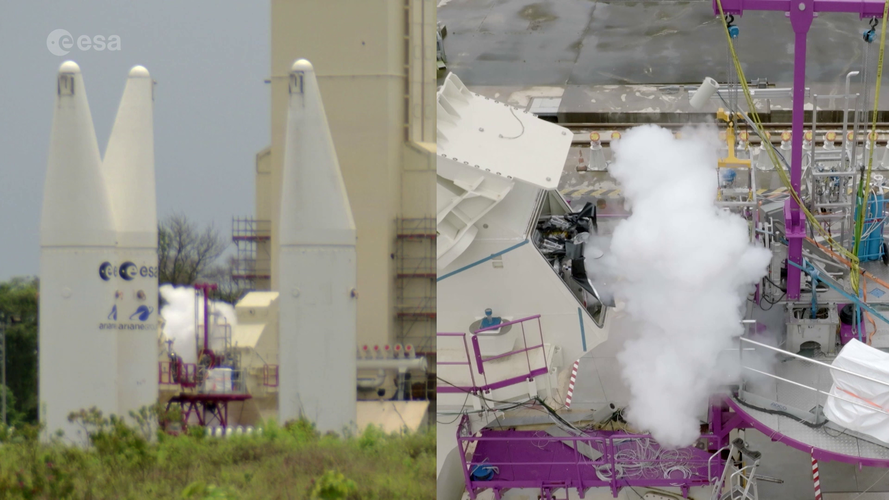
ESA’s new Ariane 6 heavy-lift rocket is a critical step closer to inaugural launch, following completion of tests to validate launch pad/launcher systems that will keep the vehicle topped up with liquid hydrogen and liquid oxygen in the critical moments before liftoff.
While on the launch pad at Europe’s Spaceport in French Guiana, Ariane 6 relies on a “cryogenic connection system” of umbilical cords carrying its hydrogen and oxygen fuel – liquified at -250C and -180C respectively – as well as helium and nitrogen used for flushing and purging. The tests seen in this video showed that retraction times and mechanical loads meet design expectations for the system which feeds the core stage. Similar tests of the upper stage system were completed earlier.
ESA Launch System Architect Engineer Franck Saingou says: “The great novelty of Ariane 6 is that those connections to the ground systems are released at liftoff. This close timing demands a very carefully synchronised movement of the connection systems, but there are great advantages.
“By remaining connected to the rocket until just a few seconds before liftoff, this system allows us to more easily drain the tanks in the event of an aborted launch.” Last-moment disconnection simplifies preparations for the next launch attempt, improving availability of Ariane 6.
And, adds Saingou, this system does away with some of the ‘purging lines’ needed by Ariane 5 – which reduces recurring costs and the dry mass of the rocket.
Daniel Neuenschwander, ESA’s Director of Space Transportation, emphasised the significance of these tests. “Ground systems are as important as the rocket itself, and it is critical that both work together as a precision system to deliver the game-changing performance we expect from Ariane 6.
“Ariane 6 marks a new era in reliable, competitive and autonomous European spaceflight, and I am delighted to see our teams in Europe and French Guiana making solid progress.”
Click here for original story, Ariane 6 cryogenic disconnection systems pass key tests
Source: ESA Top Multimedia